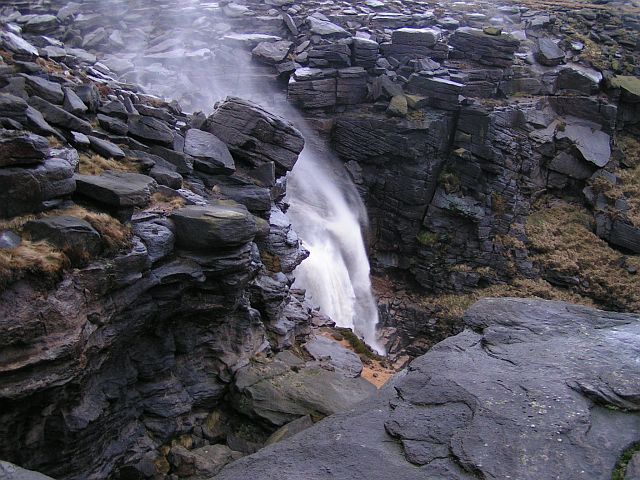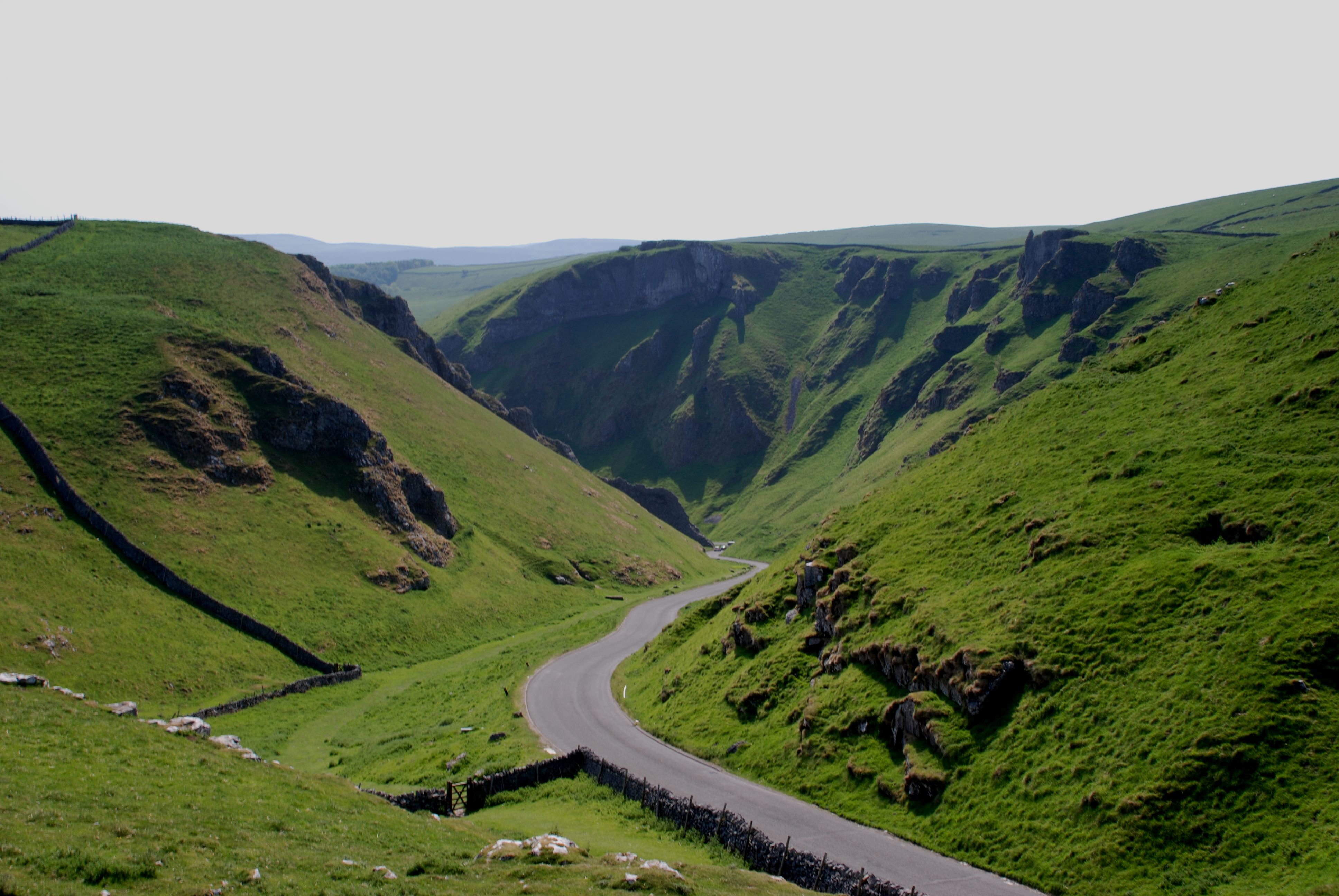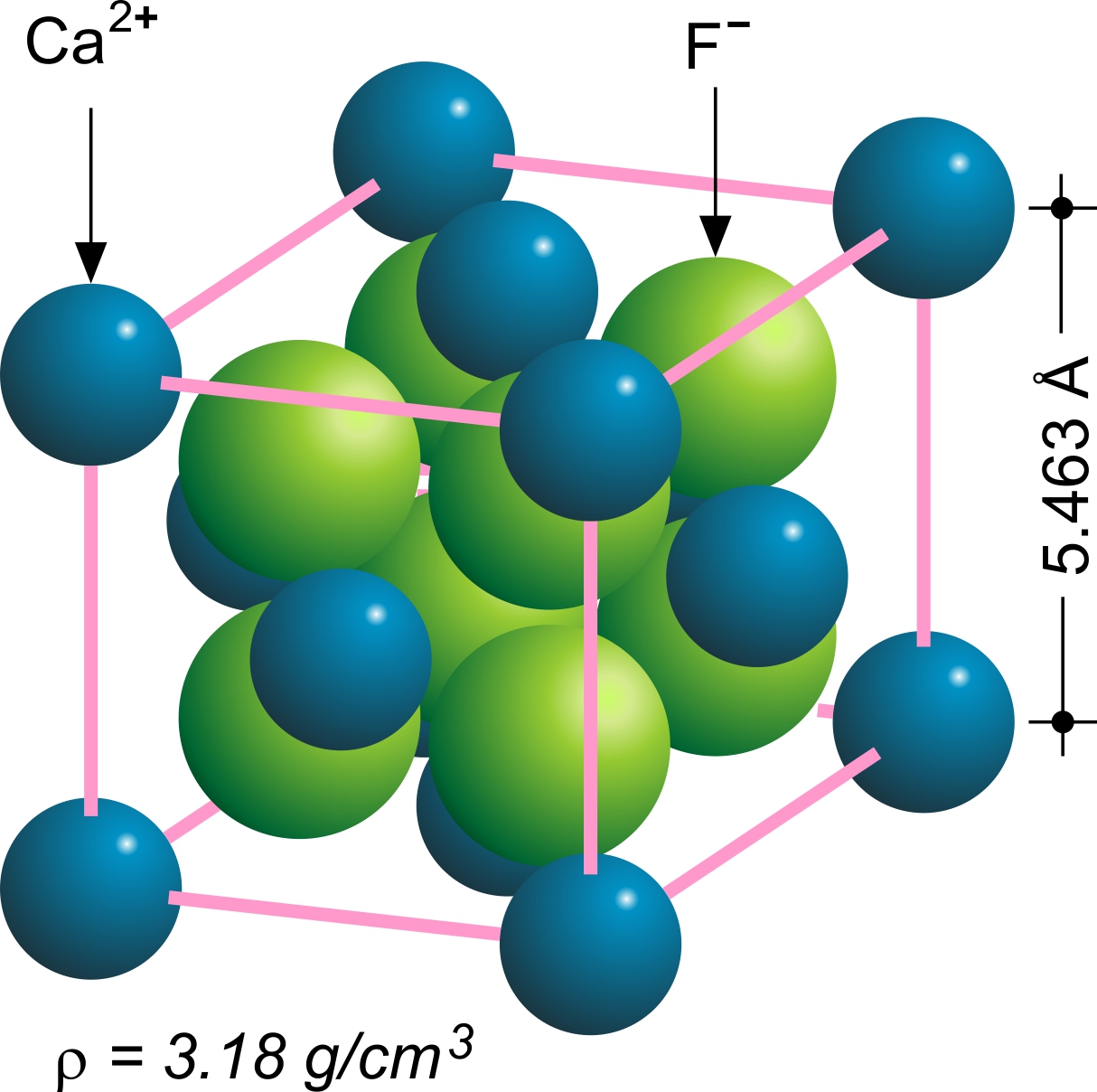|
Mam Tor
Mam Tor is a hill near Castleton in the High Peak of Derbyshire, England. Its name means "mother hill", so called because frequent landslips on its eastern face have resulted in a multitude of "mini-hills" beneath it. These landslips, which are caused by unstable lower layers of shale, also give the hill its alternative name of Shivering Mountain. In 1979, the continual battle to maintain the A625 road (Sheffield to Chapel en le Frith) on the crumbling eastern side of the hill was lost when the road officially closed as a through-route, with the Fox House to Castleton section of the road being re-designated as the A6187. The hill is crowned by a late Bronze Age and early Iron Age univallate hill fort, and two Bronze Age bowl barrows. At the base of the Tor and nearby are four show caves: Blue John Cavern, Speedwell Cavern, Peak Cavern and Treak Cliff Cavern where lead, Blue John, fluorspar and other minerals were once mined. Mam Tor was declared to be one of the S ... [...More Info...] [...Related Items...] OR: [Wikipedia] [Google] [Baidu] |
Seven Wonders Of The Peak
The Seven Wonders of the Peak were described in the 17th century by the philosopher Thomas Hobbes in his book ''De Mirabilibus Pecci: Being The Wonders of the Peak in Darby-shire, Commonly called The Devil's Arse of Peak.'' The wonders refer to places to visit in the Peak District of Derbyshire in England. Thomas Hobbes worked for the Dukes of Devonshire at Chatsworth House, as tutor and secretary. After touring the High Peak in 1626, Hobbes published his 84-page Latin poem ''De Mirabilibus Pecci'' in 1636. It was published with an English translation in 1676. He recounted:"Of the High Peak are seven wonders writ. Two fonts, two caves. One pallace, mount and pit."These wonders are: Mary Queen of Scots is known to have visited three of the wonders. By command of Queen Elizabeth I, she was held prisoner at Chatsworth House several times between 1569 and 1584 (her rooms are still called the Queen of Scots Apartments). Mary was granted permission by the Queen to ‘take the cure� ... [...More Info...] [...Related Items...] OR: [Wikipedia] [Google] [Baidu] |
Kinder Scout
Kinder Scout is a moorland plateau and National nature reserve (United Kingdom), National Nature Reserve in the Dark Peak of the Derbyshire Peak District in England. Part of the moor, at above sea level, is the highest point in the Peak District, in Derbyshire and the East Midlands. Overview Kinder Scout is part of the Dark Peak Site of Special Scientific Interest, and part of the plateau was designated as a National Nature Reserve in 2009. Much of the area is owned and managed by the National Trust as part of its High Peak Estate. The city of Manchester and the Greater Manchester conurbation can be seen from the western edges, as can Winter Hill (Lancashire), Winter Hill near Bolton and, in good weather, the mountains of Snowdonia in North Wales. To the north, across the Snake Pass, lie the high moors of Bleaklow and Black Hill (Peak District), Black Hill, which are of similar elevation; the Pennine Way long-distance footpath crosses the three hills on its route from nearby Eda ... [...More Info...] [...Related Items...] OR: [Wikipedia] [Google] [Baidu] |
Blue John Cavern
The Blue John Cavern is one of the four show caves in Castleton, Derbyshire, England. The others are Peak Cavern, Treak Cliff Cavern and Speedwell Cavern. Description The cavern takes its name from the semi-precious mineral Blue John, which is still mined in small amounts outside the tourist season and made locally into jewellery. The deposit itself is about 250 million years old. The miners who work the remaining seams are also the guides for underground public tours. The eight working seams are known as Twelve Vein, Old Dining Room, Bull Beef, New Dining Room, Five Vein, Organ Room, New Cavern and Landscape. In 1865, Blue John Cavern was the site of the first use of magnesium to light a photograph underground. It was taken by Manchester photographer Alfred Brothers. Blue John In the UK Blue John, or "Derbyshire Spar", is found only in Blue John Cavern and the nearby Treak Cliff Cavern. It is a type of banded fluorite Fluorite (also called fluorspar) is the min ... [...More Info...] [...Related Items...] OR: [Wikipedia] [Google] [Baidu] |
Rushup Edge
Rushup Edge is a ridge in the Derbyshire Peak District of England. The ridge's highest point is Lord's Seat at , while Mam Tor lies beyond its eastern end, at the western end of the Great Ridge. Lord's Seat is the site of a round barrow. Geology Rushup Edge is part of the ridge which extends east to Mam Tor, Hollins Cross, Back Tor and Lose Hill, separating the Edale and Hope valleys. The ridge is formed of Namurian (c320mya) age Mam Tor Beds (alternating sandstone and siltstone) and landslides on the north have formed colluvium Colluvium (also colluvial material or colluvial soil) is a general name for loose, unconsolidated sediments that have been deposited at the base of hillslopes by either rainwash, Sheet erosion , sheetwash, slow continuous downslope creep, or a va .... Protest In October 2014, mountain bikers, walkers, horse riders, climbers and conservationists held a protest against Derbyshire County Council maintenance work on the byway that runs along Rushup ... [...More Info...] [...Related Items...] OR: [Wikipedia] [Google] [Baidu] |
Winnats Pass
Winnats Pass (or Winnats, as shown on some Ordnance Survey maps) is a hill pass and limestone gorge in the Peak District of Derbyshire, England. The name is a corruption of 'wind gates' due to the swirling winds through the pass. It lies west of the village of Castleton, in the National Trust's High Peak Estate and the High Peak borough of Derbyshire. The road winds through a cleft, surrounded by high limestone ridges. At the foot of the pass is the entrance to Speedwell Cavern, a karst cave accessed through a flooded lead mine, and which is a popular tourist attraction. In the 1930s, Winnats Pass was the location used for annual access rallies in support of greater access to the moorlands or the Peak District, around the time of the Mass Trespass of Kinder Scout. At their peak these were attended by up to 10,000 people. The permanent closure of the main A625 road at Mam Tor in 1979 due to subsidence has resulted in Winnats Pass being heavily used by road traffic. However ... [...More Info...] [...Related Items...] OR: [Wikipedia] [Google] [Baidu] |
White Peak
The White Peak, also known as the Low Peak, is a limestone plateau that forms the central and southern part of the Peak District in England. It is mostly between and above sea-level and is enclosed by the higher altitude Dark Peak (also known as the High Peak) to the west, north and east. Area Broadly speaking, the White Peak covers the Derbyshire and Staffordshire parts of the Peak District from the Hope Valley southwards to the Weaver Hills near the Churnet Valley. As defined by Natural England, the White Peak national character area covers and includes the area approximately bounded by Ashbourne, Buxton, Castleton, Matlock and Wirksworth. Geology and soils The geology of the White Peak has its origins in the Carboniferous Period, when the area was under a shallow sea that was fringed by reefs, leading to thick deposits of shelly calcareous material. Over millions of years the area rose up and subsided several times, leading to muddy, sandy and peaty deposits overl ... [...More Info...] [...Related Items...] OR: [Wikipedia] [Google] [Baidu] |
Dark Peak
The Dark Peak is the higher and wilder part of the Peak District in England, mostly forming the northern section but also extending south into its eastern and western margins. It is mainly in Derbyshire but parts are in Staffordshire, Cheshire, Greater Manchester, West Yorkshire and South Yorkshire. It gets its name because (in contrast to the White Peak), the underlying limestone is covered by a cap of Millstone Grit sandstones with softer shale underneath, meaning that in winter the soil is almost always saturated with water. The land is thus largely uninhabited moorland plateaux where almost any depression is filled with sphagnum bogs and black peat. The High Peak is an alternative name for the Dark Peak, but High Peak is also the name of an administrative district of Derbyshire which includes part of the White Peak. The areas of Millstone Grit form an 'inverted horseshoe' around the lower uncapped limestone areas of the White Peak, enclosing it to the west, north and e ... [...More Info...] [...Related Items...] OR: [Wikipedia] [Google] [Baidu] |
Thomas Hobbes
Thomas Hobbes ( ; 5 April 1588 – 4 December 1679) was an English philosopher, best known for his 1651 book ''Leviathan (Hobbes book), Leviathan'', in which he expounds an influential formulation of social contract theory. He is considered to be one of the founders of modern political philosophy. In his early life, overshadowed by his father's departure following a fight, he was taken under the care of his wealthy uncle. Hobbes's academic journey began in Malmesbury#Westport St Mary, Westport, leading him to the University of Oxford, where he was exposed to classical literature and mathematics. He then graduated from the University of Cambridge in 1608. He became a tutor to the Cavendish family, which connected him to intellectual circles and initiated his extensive travels across Europe. These experiences, including meetings with figures like Galileo, shaped his intellectual development. After returning to England from France in 1637, Hobbes witnessed the destruction and br ... [...More Info...] [...Related Items...] OR: [Wikipedia] [Google] [Baidu] |
Fluorspar
Fluorite (also called fluorspar) is the mineral form of calcium fluoride, CaF2. It belongs to the halide minerals. It crystallizes in isometric cubic habit, although octahedral and more complex isometric forms are not uncommon. The Mohs scale of mineral hardness, based on scratch hardness comparison, defines value 4 as fluorite. Pure fluorite is colourless and transparent, both in visible and ultraviolet light, but impurities usually make it a colorful mineral and the stone has ornamental and lapidary uses. Industrially, fluorite is used as a flux for smelting, and in the production of certain glasses and enamels. The purest grades of fluorite are a source of fluoride for hydrofluoric acid manufacture, which is the intermediate source of most fluorine-containing fine chemicals. Optically clear transparent fluorite has anomalous partial dispersion, that is, its refractive index varies with the wavelength of light in a manner that differs from that of commonly used glasses, s ... [...More Info...] [...Related Items...] OR: [Wikipedia] [Google] [Baidu] |
Derbyshire Blue John
Blue John (also known as Derbyshire Spar) is a semi-precious mineral, a rare form of fluorite with bands of a purple-blue or yellowish colour. In the United Kingdom it is found only at Blue John Cavern and Treak Cliff Cavern at Castleton in Derbyshire. During the 19th century, it was mined for its ornamental value, and mining continues on a small scale. Etymology The most common explanation for the name is that it derives from the French , meaning 'blue-yellow'. The story goes that Blue John was exported to France where it was used by ''ormolu'' workers during the reign of Louis XVI (1774–92). However, there is no archival record of any Blue John being exported to France, and the early ''ormolu'' ornaments which use Blue John were being manufactured by Matthew Boulton of Birmingham in the 1760s. An alternative origin of the name derives from an old miners' name for the zinc ore sphalerite, which they called "Black Jack". Thus, the unique blue stone mined in these caverns c ... [...More Info...] [...Related Items...] OR: [Wikipedia] [Google] [Baidu] |
Lead
Lead () is a chemical element; it has Chemical symbol, symbol Pb (from Latin ) and atomic number 82. It is a Heavy metal (elements), heavy metal that is density, denser than most common materials. Lead is Mohs scale, soft and Ductility, malleable, and also has a relatively low melting point. When freshly cut, lead is a shiny gray with a hint of blue. It tarnishes to a dull gray color when exposed to air. Lead has the highest atomic number of any stable nuclide, stable element and three of its isotopes are endpoints of major nuclear decay chains of heavier elements. Lead is a relatively unreactive post-transition metal. Its weak metallic character is illustrated by its Amphoterism, amphoteric nature; lead and lead oxides react with acids and base (chemistry), bases, and it tends to form covalent bonds. Lead compounds, Compounds of lead are usually found in the +2 oxidation state rather than the +4 state common with lighter members of the carbon group. Exceptions are mostly limited ... [...More Info...] [...Related Items...] OR: [Wikipedia] [Google] [Baidu] |










